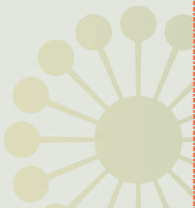TIME AND AGAIN
July, 2008
An English Heritage sign on a building
in Kensington, London read: “Jacob von Hogflume, 1864-1909,
Inventor of Time Travel, lived here in 2063.”
I would like to have a conversation with him, but I’m
afraid that the speed at which I am moving into the future
will be inadequate to have a physical encounter in 2063.
Of course the sign is a joke perpetrated by Dave Askwith
and Alex Normanton in their book, Signs of Life.
And yet it opens up a worm hole into the concept of a parallel universe
or alternate reality that co-exists with our own where paradoxes
can be explained and the appearances of ghosts and other non-physical
manifestations become plausible. History, as well as the sacred writings
of many cultures, is replete with accounts of seers and visionaries
who see the future with remarkable clarity. We also have an abundance
of accounts of persons who say that they have experienced encounters
with persons known to have existed in another time.
In his autobiography, Dichtung und Wahrheit, the great German author,
Johann Wolfgang von Goethe describes riding on horseback to the village
of Drusenheim and encountering himself riding toward him. The doppelganger
was wearing different clothes but it was clearly Goethe. Eight years
later, Goethe found himself returning from Drusenheim attired, quite
by accident, in the same garb he had seen earlier. He does not say
whether he encountered the Goethe that had perceived him eight years
earlier.
These juxtapositions of time are not only fascinating, but
push the frontiers of rational thought and compel theories
that are on the edge of scientific investigation. Yesterday’s fiction becomes
today’s theory and tomorrow’s truth. However, when we
get right down to it, we are still using the mind as perceiver and
knower.
Years ago I learned the principle of “what you perceive is
what you conceive, and what you conceive is what you create.” The
universe is created out of the mind of God, but is apprehended by
the human mind. The science-fiction writer Robert Heinlein used the
term “pantheistic solipsism”—we create parallel
universes by imagining them. Thus Oz or Narnia or Mordor are real.
It is easy to dismiss paranormal studies as fantasy, time
displacement as paradoxical, or the appearances of spiritual
entities as psychosis, but if Heisenberg’s Uncertainty
Principle is correct, the universe, or multiverse, changes
just by observing it.
It is my hope that the Academy will continue to collect data, to
theorize and postulate, and share in a collegial forum this credible
and incredible world that is within us and beyond us.
Dr. Harry L. Serio |

